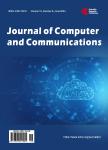Attention Based Multi-Patched 3D-CNNs with Hybrid Fusion Architecture for Reducing False Positives during Lung Nodule Detection
Attention Based Multi-Patched 3D-CNNs with Hybrid Fusion Architecture for Reducing False Positives during Lung Nodule Detection作者机构:Emerging Technologies Department Mahindra & Mahindra IT Mumbai Maharashtra India Computer Vision Division Supervue AI Visakhapatnam Andhra Pradesh India Department of Electronics & Communication Engineering Vasireddy Venkatadri Institute of Technology Nambur Andhra Pradesh India
出 版 物:《Journal of Computer and Communications》 (电脑和通信(英文))
年 卷 期:2021年第9卷第4期
页 面:1-26页
学科分类:08[工学] 0812[工学-计算机科学与技术(可授工学、理学学位)]
主 题:3D-CNN Attention Gated Networks Lung Nodules Medical Imaging X-Ray Computed Tomography
摘 要:In lung nodules there is a huge variation in structural properties like Shape, Surface Texture. Even the spatial properties vary, where they can be found attached to lung walls, blood vessels in complex non-homogenous lung structures. Moreover, the nodules are of small size at their early stage of development. This poses a serious challenge to develop a Computer aided diagnosis (CAD) system with better false positive reduction. Hence, to reduce the false positives per scan and to deal with the challenges mentioned, this paper proposes a set of three diverse 3D Attention based CNN architectures (3D ACNN) whose predictions on given low dose Volumetric Computed Tomography (CT) scans are fused to achieve more effective and reliable results. Attention mechanism is employed to selectively concentrate/weigh more on nodule specific features and less weight age over other irrelevant features. By using this attention based mechanism in CNN unlike traditional methods there was a significant gain in the classification performance. Contextual dependencies are also taken into account by giving three patches of different sizes surrounding the nodule as input to the ACNN architectures. The system is trained and validated using a publicly available LUNA16 dataset in a 10 fold cross validation approach where a competition performance metric (CPM) score of 0.931 is achieved. The experimental results demonstrate that either a single patch or a single architecture in a one-to-one fashion that is adopted in earlier methods cannot achieve a better performance and signifies the necessity of fusing different multi patched architectures. Though the proposed system is mainly designed for pulmonary nodule detection it can be easily extended to classification tasks of any other 3D medical diagnostic computed tomography images where there is a huge variation and uncertainty in classification.



